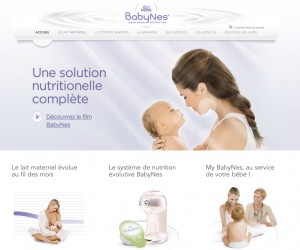My husband and I often talk to our children about marketing. We want them to be aware of how companies try to get people to buy their product(s), so that they can make more informed choices and don’t fall prey to clever marketing tactics (“Do you think those shoes can really make you fly?”).
I think this is something that we need to be aware of when talking about infant feeding as well. When I get into a conversation about formula companies, I often hear “Well formula companies can’t be all bad because it says right on their website and on the cans that “breast is best!”. This is very true. If you go to any formula company website, or if you look at a can of formula, you will see messages about “breast is best”. Does this mean that formula companies truly believe that and want all moms to breastfeed? The answer to that is a resounding No! What it does mean is that their marketing division with their millions of dollars has determined that putting that message on their product won’t hurt sales. The formula industry is worth billions, and it is not against throwing it’s weight around to make changes to anything that it feels might jeopardize it’s profits. In 2004, they did just that when they opposed the new breastfeeding ads that the US government was planning to unveil. The ads were eventually replaced with a watered down version due to pressure from the formula companies. So if formula companies believed that putting the phrase “breast is best” on their websites and products would hurt sales, you can be sure that they would be making a fuss about it.
So why do formula companies love “breast is best”? Well, as outlined in Diane Wiessingers very insightful article “Watch Your Language“, “breast is best” frames formula feeding as the norm and breastfeeding as a nice extra if you’re able to do it. The message that parents receive has become “breast is best, but formula is OK too”. “Breast is best” allows formula companies to say “We fully support breastfeeding. See – it says so on our website and products”. It allows the companies to give the appearance of caring about breastfeeding while they go about undermining it. Breastfeeding is after all their main competition! I wonder what the reaction would be from the formula companies if they were required to put messages such as “Formula feeding increases your baby’s risk of obesity” on their websites and products?
Formula companies spend millions on marketing, and everything on their websites is designed to subtly turn mothers off of breastfeeding. The website for the new BabyNes machine from Nestle is a perfect example of their marketing tactics at work.
When you first open the page, you are greeted with a beautiful mother and her (formula fed) baby who are quite literally glowing thanks to the special effects on the page. Underneath, we see a woman breastfeeding her baby. Great that they’re showing breastfeeding right? Well, if we look closer at it, the breastfeeding mom is sitting on the floor, is barefoot, is half undressed and her dark roots are showing through her blond hair colouring (compare that to the beautifully highlighted hair of the formula feeding mom). All of this is subtle, but it creates an emotional reaction (which is exactly what it was designed to do). The reaction may not even be a conscious one for many people, but it plays on the stereotype of women who breastfeed being barefoot “hippies” who just “whip it out”. It also plays into the fear of having a baby who ties you down and nurses so often that you can’t even get your hair coloured. Even the graph behind the mom with the downward slope to it produces a negative feeling about breastfeeding.
On the right is a picture of this same breastfeeding mom and baby with a doctor standing beside them. The text surrounding this picture is talking about the service that Nestle offers where you can talk to their “experts” to get customized advice about feeding your baby. In using the image of the breastfeeding mother however, the implication is that breastfeeding is complicated and likely requires the help of a health professional.
Smack dab in the middle of these two pictures of the poor breastfeeding mother, is Nestle’s new “comprehensive nutrition system” to save you from having to expose yourself to the world, miss out on “you” time and spend lots of time at the doctors office due to those cracked and bleeding nipples you’re bound to have if you’re breastfeeding. A wonderful example of marketing tactics at work. Formula companies also use pictures of breastfeeding moms to convey the message that their formula is the next best thing to breastmilk. The breastfeeding mother in the pictures on the Nestle site is wearing white (which implies purity), and so is the formula feeding mom. The emotional message? Our product is just as good (pure) as breastmilk.
Along with the “breast is best” messages, formula websites often contain information about breastfeeding. This information is not placed there due to a desire to help breastfeeding moms however. The information is again designed to undermine breastfeeding. There is often talk of cracked and bleeding nipples, embarrassing leaks, the need to maintain a special diet etc. etc. When I gave birth to my son, I remember there was a “breastfeeding” booklet by the side of my bed (produced by a formula company). One thing I really remember was in the section on pumping where it started out with the line “First, fully expose your breasts”. Who wants to pump if it means “fully exposing” yourself? Much easier to just go to formula right? It was a classic example of how the language the formula companies use is designed to make moms feel uncomfortable about breastfeeding, feel like it’s too much work or too restricting etc.
Formula companies spend a lot of money on getting their marketing right. To me, that means if the formula companies are happy to use the phrase “Breast is Best” on their cans of formula, then it’s definitely a phrase that we should not be using to try to encourage more moms to breastfeed. Breast is not best, it is normal.


